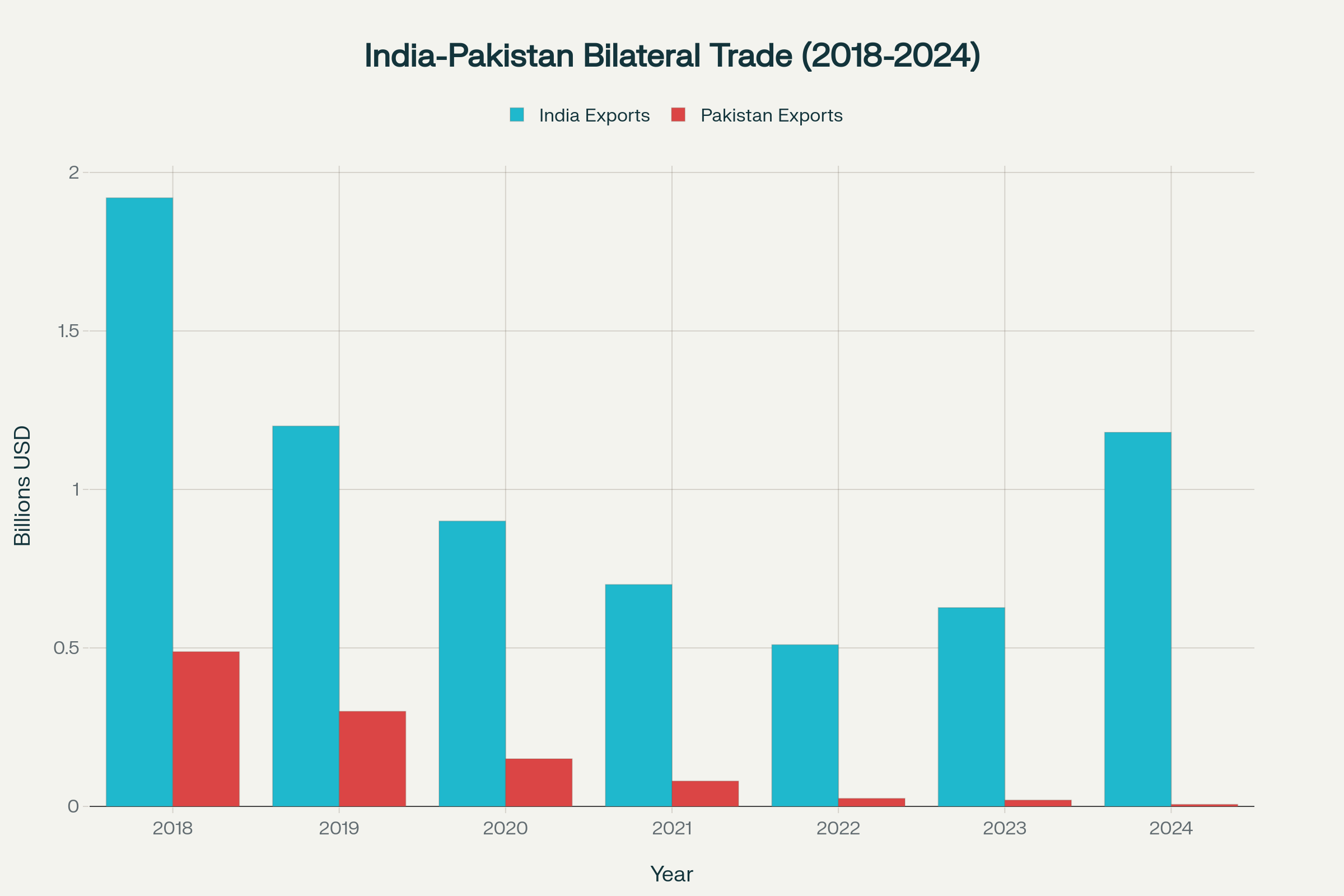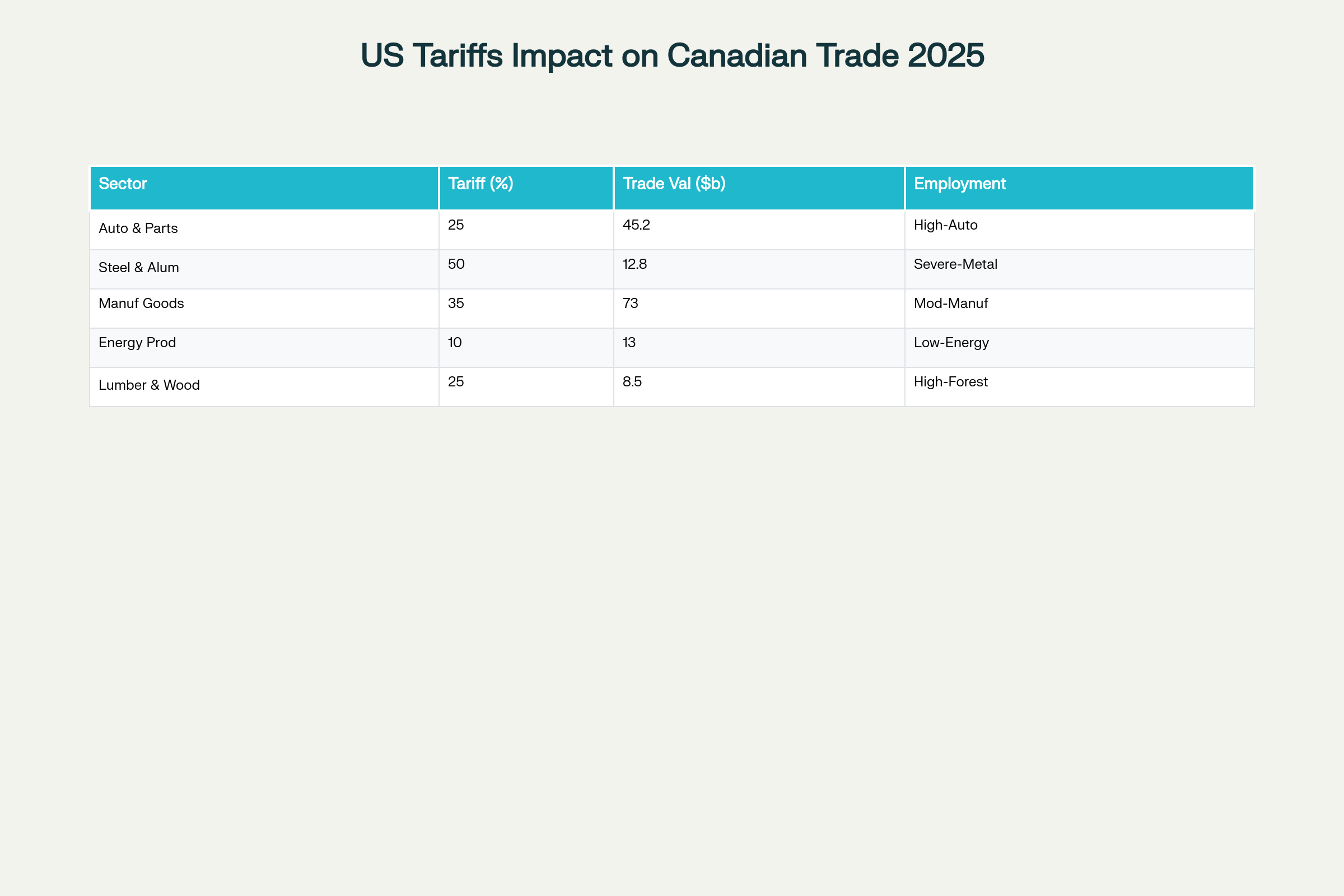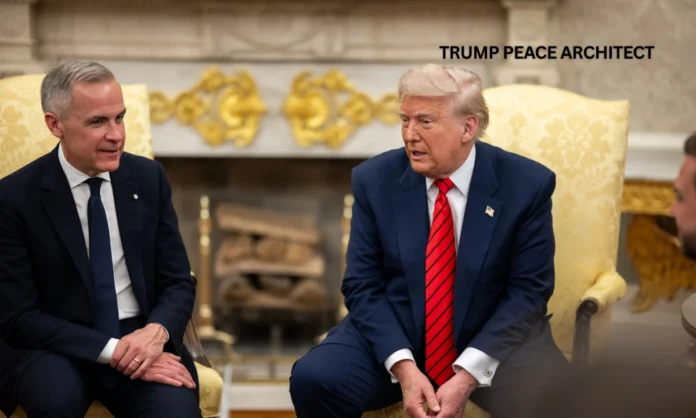Key Highlights:
- Canadian Prime Minister Mark Carney praised President Trump as “transformative” for allegedly brokering Trump Carney India Pakistan peace, despite Indian government denials of third-party mediation
- Carney’s second White House visit since taking office focused on reducing U.S. tariffs affecting $150 billion in Canadian trade across multiple sectors
- The Trump Carney India Pakistan peace narrative reflects broader diplomatic strategies as both leaders seek mutually beneficial outcomes
Opening Overview
President Donald Trump received significant diplomatic validation from Canadian Prime Minister Mark Carney during their October 7 White House meeting, with Carney crediting Trump as a “transformative president” who achieved Trump Carney India Pakistan peace through decisive intervention. The Canadian leader’s strategic praise came during his second official visit to Washington since assuming office in March 2025, representing a calculated diplomatic approach to secure trade relief for Canada amid crippling U.S. tariffs. Carney specifically highlighted Trump’s role in global affairs, stating that the transformation in economy, unprecedented NATO partner commitments, and the Trump Carney India Pakistan peace breakthrough demonstrated exceptional leadership.
Canada PM Mark Carney, while listing out Trump's achievement, mentions peace between India & Pakistan. The Canadian PM is hosted at the White House by the US President Donald Trump. pic.twitter.com/r1A7qmX5ya
— Sidhant Sibal (@sidhant) October 7, 2025
Despite India’s consistent denials of any third-party intervention in the May 2025 ceasefire, Trump continues claiming credit for mediating the Trump Carney India Pakistan peace agreement between the nuclear-armed neighbors. The diplomatic exchange occurred as Canada faces mounting economic pressure from U.S. tariffs affecting over $150 billion in bilateral trade across critical sectors.
Trump’s Contested India-Pakistan Peace Narrative
- Trump has made over 40 claims about achieving Trump Carney India Pakistan peace since May 2025
- The U.S. President attributes the Trump Carney India Pakistan peace success to trade leverage and tariff threats
President Trump’s assertion of mediating the Trump Carney India Pakistan peace remains a contentious diplomatic narrative that India firmly disputes, despite repeated international praise. The conflict began on May 7, 2025, when India launched Operation Sindoor, targeting terrorist infrastructure in Pakistan and Pakistan-administered Kashmir in retaliation for the April 22 Pahalgam attack that killed 26 civilians.
Trump claims he threatened both countries with trade cessation and high tariffs, stating he told them they would face economic consequences if they continued fighting, ultimately securing Trump Carney India Pakistan peace. However, India maintains that the ceasefire was reached through direct military communication between the Directors General of Military Operations (DGMOs) of both countries, with Pakistan’s military leadership calling for an immediate truce, contradicting the Trump Carney India Pakistan peace narrative.
The four-day conflict resulted in significant casualties, with Pakistan reporting 51 deaths including 40 civilians and 11 military personnel, while India reported at least 21 fatalities before the Trump Carney India Pakistan peace took effect. Despite Trump’s repeated claims about the Trump Carney India Pakistan peace achievement and Pakistan’s subsequent nomination of him for the 2026 Nobel Peace Prize, Indian External Affairs Ministry officials have categorically denied any third-party intervention in the ceasefire negotiations.

India-Pakistan bilateral trade declined significantly from $2.41 billion in 2018 to $1.2 billion in 2024 following trade restrictions
Carney’s Strategic Trade Diplomacy
- Canada faces tariffs ranging from 10% on energy to 50% on steel and aluminum, affecting $150+ billion in trade
- The Canadian Prime Minister leads a minority government with 169 seats, requiring careful diplomatic positioning
Mark Carney’s praise of Trump and acknowledgment of the Trump Carney India Pakistan peace represents a calculated diplomatic shift from Canada’s previous confrontational stance regarding U.S. trade policies. The former Bank of Canada and Bank of England governor assumed the prime ministership in March 2025 after winning a leadership campaign that partly capitalized on Canadian backlash against Trump’s tariff policies. Since taking office, Carney has faced mounting pressure to address U.S. tariffs that began in February 2025, initially imposing 25% duties on most Canadian goods except oil and energy, later increased to 35% in August.
The meeting occurred as Canada prepares for the 2026 review of the United States-Mexico-Canada Agreement (USMCA), with 85% of Canada-U.S. trade currently remaining tariff-free due to USMCA exemptions. During their White House exchange, Trump jested about a Canadian “merger” and his previous suggestions that Canada become the 51st U.S. state, while Carney diplomatically deflected with humor, maintaining focus on the Trump Carney India Pakistan peace achievements. The Canadian leader’s strategic positioning reflects his background as an international financial leader who previously managed monetary policy during the 2008 financial crisis and guided the Bank of England through Brexit, now leveraging the Trump Carney India Pakistan peace narrative for trade benefits.
Economic Stakes in Canada-U.S. Relations
- Current U.S. tariffs affect critical Canadian sectors with rates up to 50% on steel and aluminum
- Canada-U.S. bilateral trade totaled over $760 billion in 2024, making disruption economically devastating
The economic implications of the Trump-Carney meeting extend far beyond diplomatic pleasantries about the Trump Carney India Pakistan peace, with substantial Canadian industries hanging in the balance. Canada currently faces a complex tariff structure that began with Trump’s February 2025 trade war declaration, imposing initial 25% tariffs on most Canadian goods except energy, later escalated to 35% for general goods.
The automotive sector bears particular burden under Trump’s global 25% tariffs on automobiles and auto parts, though exemptions exist for USMCA-compliant goods, while steel and aluminum face punitive 50% rates. During their meeting, both leaders identified opportunities for material progress in steel, aluminum, and energy trade, directing their teams to conclude negotiations in coming weeks while discussing the Trump Carney India Pakistan peace model. However, Canada also faces uncertainty from looming Section 232 investigations into timber, lumber, trucks, commercial aircraft, and processed critical minerals that could disproportionately impact Canadian exporters.
Despite Carney’s optimistic public statements about getting the “right deal” from the United States and praising the Trump Carney India Pakistan peace achievement, he left Washington without firm promises of tariff relief. Economic analysts estimate that 25% tariffs on Canadian products would result in approximately $73 billion annually in tariffs, while 10% tariffs on energy resources would generate $13 billion worth of additional duties.

U.S. tariffs on Canadian goods range from 10% on energy products to 50% on steel and aluminum, affecting over $150 billion in trade
International Implications and Regional Security
- The meeting addressed Middle East conflicts, Arctic security cooperation, and NATO defense spending commitments
- Carney expressed support for Trump’s Gaza peace efforts while referencing the Trump Carney India Pakistan peace model
Beyond trade negotiations, the Trump-Carney summit addressed critical international security challenges, with the Trump Carney India Pakistan peace serving as a template for other diplomatic interventions. The leaders observed the two-year anniversary of the October 7, 2023 Hamas attack on Israel, with Carney thanking Trump for his Middle East leadership and historic peace plan facilitating Israel-Hamas negotiations in Egypt, drawing parallels to the Trump Carney India Pakistan peace success. Carney emphasized Canada’s increased defense investments and upcoming Defense Industrial Strategy while discussing opportunities for enhanced Arctic security cooperation, noting how the Trump Carney India Pakistan peace demonstrated effective crisis resolution.
The meeting occurred during a period of heightened global tensions, with Trump claiming his tariff-based diplomacy has brought peace to multiple conflict zones beyond the Trump Carney India Pakistan peace achievement, including Azerbaijan-Armenia and efforts to disable Iran as a regional threat. Canadian support for Trump’s international initiatives represents a significant diplomatic alignment, particularly given Carney’s previous criticism of Trump’s policies during his leadership campaign, though the Trump Carney India Pakistan peace narrative provides common ground.
The Prime Minister also met separately with Vice President JD Vance and key Senate committee leaders to discuss the upcoming USMCA review and broader Canada-U.S. economic relationship, referencing the Trump Carney India Pakistan peace as evidence of successful diplomatic engagement. These diplomatic engagements reflect Canada’s comprehensive approach to managing relations with its largest trading partner while navigating complex international security challenges, using the Trump Carney India Pakistan peace as a diplomatic bridge.
Closing Assessment
The Trump-Carney White House meeting represents a pivotal moment in Canada-U.S. relations, demonstrating how the Trump Carney India Pakistan peace narrative can reshape diplomatic rhetoric even among traditionally close allies facing economic pressures. Carney’s strategic praise of Trump’s controversial Trump Carney India Pakistan peace claims illustrates the pragmatic calculations facing smaller economies when confronting U.S. trade policies, using international success stories as diplomatic currency.
While both leaders expressed optimism about future trade progress and referenced the Trump Carney India Pakistan peace model for conflict resolution, the absence of concrete tariff relief commitments underscores the challenging negotiations ahead as the 2026 USMCA review approaches. The meeting’s broader significance extends beyond bilateral trade concerns, reflecting how economic leverage increasingly influences international diplomatic positioning in an era of renewed great power competition, with the Trump Carney India Pakistan peace serving as a template for successful intervention.


